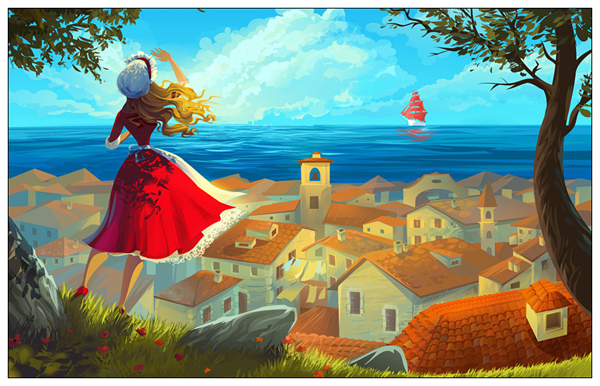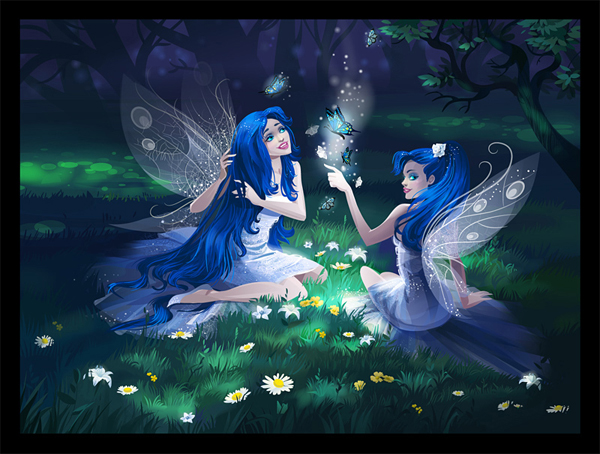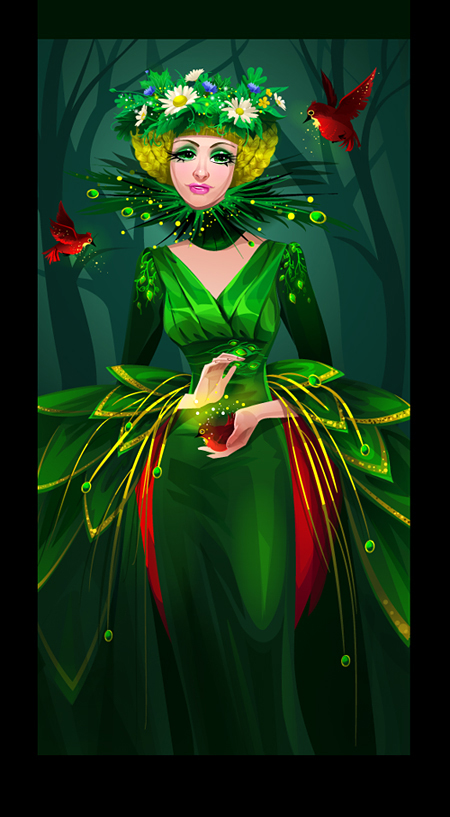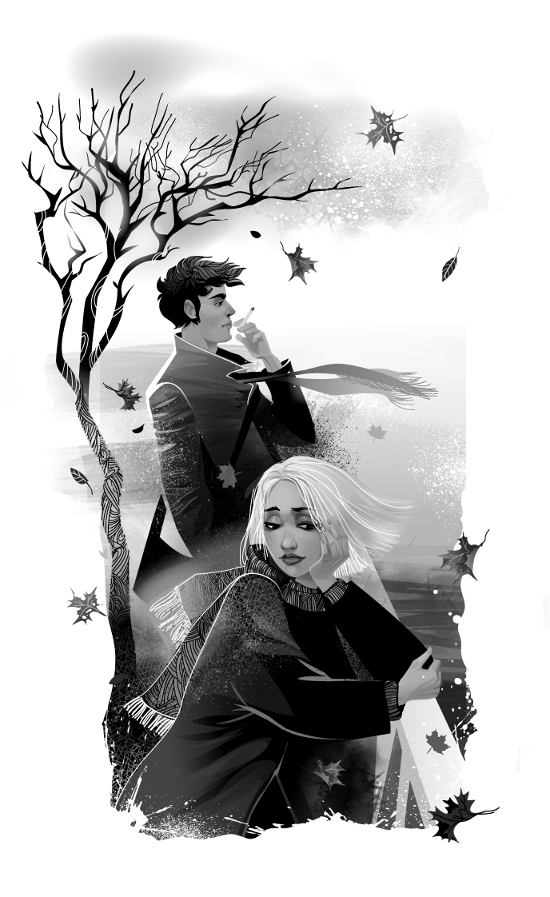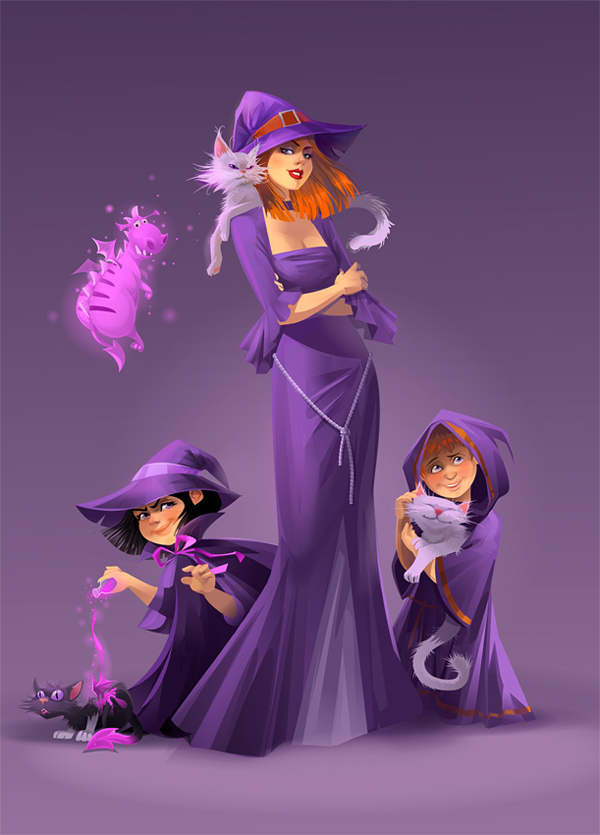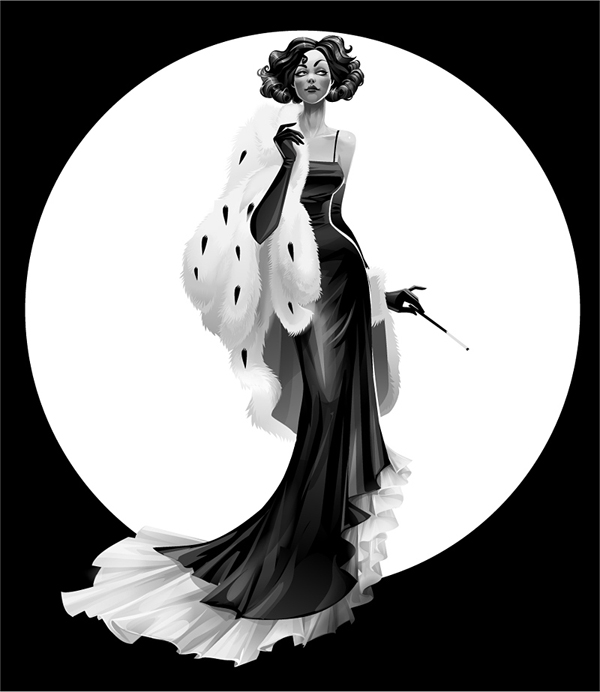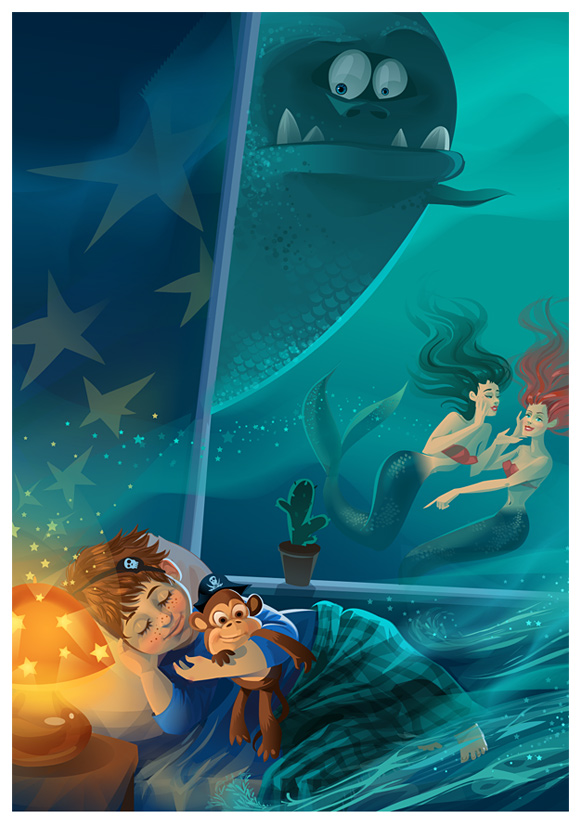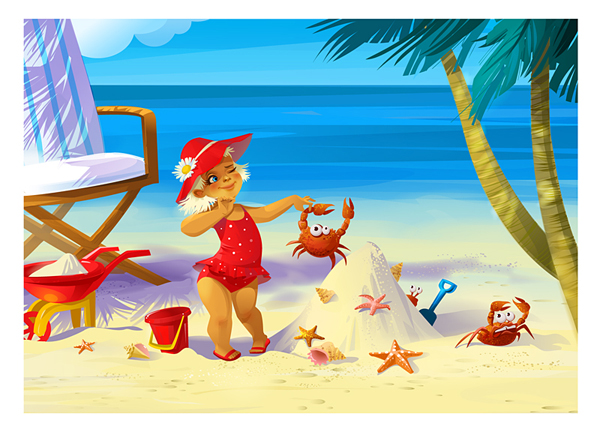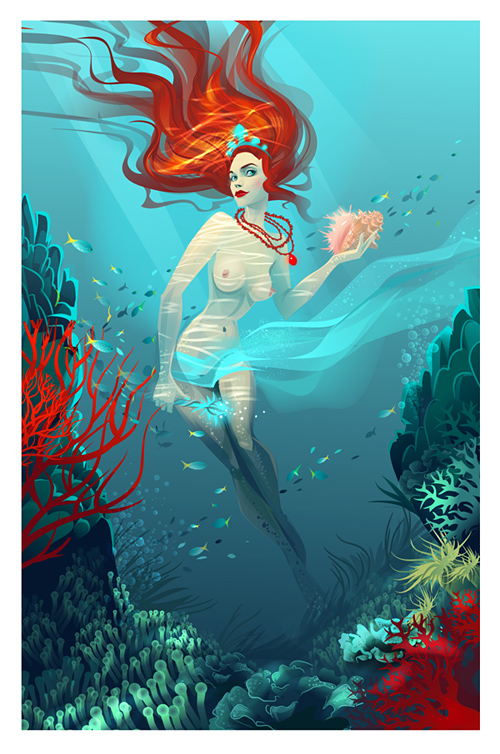In this interview we will meet great Russian illustrator Catherine Dedova. She believes that vector is powerful, but it is also limited in artistic tools. In order to have your own style, new ways to use familiar tools need to be invented. This is where vector reveals its brilliant simplicity. We are only limited by our own imagination. Learn more about Catherine and her Illustrations after the jump.
Q Hi Katia, tell us a little bit about yourself. When did you start drawing and why did you decide to become an illustrator?
Hi, I’m 32 years old, I was born in Moscow. I live in Italy now. My major at school was not an illustrator but an artist: I studied at the Textile Academy as an artist for clothing. I was drawing all my life, since I can remember myself, so the choice of profession was obvious to me.
Q How long did it take you to become a successful illustrator? Do you have any experience working as a salaried illustrator or did you immediately become a freelancer?
Even my entire life is not enough to master the skill. Artists must be constantly improving! So I hope that all the fun has not come yet. Unfortunately, I have no experience as a salaried illustrator, although I would not refuse to try. Freelancing has its drawbacks. The most important of them are instability and insecurity.
Q Are there any ways of protection for a freelancer, we are primarily talking about payment failure protection. Can it be a step-by-step payment for the project, or the use of services of “secure transactions” that can be offered by certain sites for freelancers?
All the listed above plus a contract. Unfortunately, it can not protect you against the craziness of the customer. An illustrator working for a company has a “cushion” represented by managers, and steady payment, while freelancers, as they say, are fed by their legs. Therefore, I strongly recommend you write a detailed specification, do not hesitate to ask the customer how the result should look. Which style to choose, what mood to convey, etc.
Indeed, very often a customer does not know what he or she wants, that is why issues come up. By the way, beware of customers who just want “it to look nice.” They are more likely to cause trouble. Constantly talk over the sketches with them. And immediately agree on what would happen if none of the sketches will work out. Or, if extra work will need to be done. It is very important, because in this way you can significantly loose money – that means more work for the same fee.
Q What is illustration for you, is it a hobby which brings additional income or a principal job? Can you give some tips for beginning freelancers. Do you have your Klondike place? Can you share it with us?
Drawing means everything for me! When I’m not working, I’m drawing for myself. I would advise for beginners not to lose faith in themselves. Success does not come right away, though failures, alas, happen. At the beginning it is hard to earn on your own art, you will have to accept cheap orders, but remember that this is temporarily! Do not let them pay you nothing. And the most importantly – do not cheat. Each work made with love is a huge plus for your portfolio.
Klondike is primarily a free-lance.ru, coroflot.com, behance.net and llustrators.ru. There is deviantart.com too. And if at the beginning illustrator has to search for orders on his own, so then your own portfolio starts working for you and customers come themselves.
Q What is deviantart.com for you – a way to show your portfolio to potential clients or an additional way of earnings from selling your own works? Many freelancers sell their works on photostocks, do you practice this?
Selling works on this site is a very, very specific kind of earnings, it can be compared with sales in the photostocks. If you want to earn it, you seriously need to promote yourself. Similar to having an impressive portfolio of images on popular topics. Some people manage to earn money on this only, but personally I find it easier to carry out orders. So DeviantArt is more an online portfolio for me.
Q What applications and tools do you use while working on illustrations, do you prefer any of them? What does your workstation look like?
I use Adobe Illustrator and Adobe Photoshop. Photoshop plays an auxiliary role, basically I draw in Illustrator. My workplace is simple: monitor, scanner, graphics tablet.
Q Do you prefer traditional or digital art? Do you like to vectorize your drawings? Do you have difficulties in working with Adobe Illustrator?
Digital of course! I must confess that I forgot how to paint with brushes and paints a long time ago, although I make sketches on paper only. Difficulties with the program come up constantly, but mainly due to the fact that every time I’m trying to invent a new way of drawing. But on the other hand, I stick with Illustrator, he became a continuation of my hand!
Q Should the illustrator possess the whole arsenal of vector tools, or just a minimum? Do you have any advice for those who have just begun to learn vector graphics?
Fully explore the program – it is certainly cool, but in my opinion it is not necessarily. I, personally, use a fairly limited set of tools: those are the gradients, opacity mask, a couple of effects, brushes and patterns. On the other hand, fully exploring the possibilities of the program can help you to optimize the performance, or to push for new creative solutions. In any case, sitting for hours on studying the manual does not make any sense, the program should be studied in the process of drawing.
I want to digress about vector graphics in general and the search for your own style in particular. Vector is a very powerful tool, but also extremely limited in artistic tools. After all, in fact, we are only dealing with the applying of various objects on each other. Moreover, all the artists use the same vector tools. First it is your personality.
In order to have your style different from others, we have to invent new ways to use familiar tools. And that is where vector reveals in all its brilliant simplicity. And it turns out that we are only limited by our own imagination. Beginners are often trapped in it and, after watching other people’s vector works, start copying them. Just remember that program is just “a pencil,” and you actually draw with your head.
Q I really like the colors of your work. Do you save found colors, or do you look for new solutions in each job? Do you have any advice on working with color?
I never pick the color straight in Illustrator, but first I make a color sketch in Photoshop. Working with vector is specific since it is impossible to control the color simultaneously in all the steps. Photoshop is ideal for that. I can quickly paint over the entire surface of the sketch, create “air” using half-transparent brushes, impose Photo Filters, quickly change the contrast or palette, if needed. And in case I do not like the result, I can also easily edit an entire image or part of it. And I will only have to pick the color using the Eyedropper in Illustrator.
Q Do you have projects you like most and what are you working on now, do you have enough time for creativity?
Alas, at this period of my life I have to work overnights. Approximately from 4 to 8 am. Sometimes I can work an hour and a half on my lunch. Right now I’m drawing a few pages of comics in vector, of course! I’m also planning to convert one of my illustrations “Hanami” into a series of artworks to submit for a competition of book illustrations.
Q Your works are so clean and bright, where do you search for inspiration for creativity?
Thank you! I’m not looking for inspiration, it finds me itself! Just kidding, of course. I’m very inspired by contemporary cartoons – that’s really an inexhaustible source of knowledge, by the way, I highly recommend you study concepts from Disney, especially those who draw for children, or in a cartoon style. I’m also very inspired by my colleagues works, which also make me feel bad when I realize my imperfections.
Q Katia, thanks for the interview, some final wishes for your colleagues.
I wish you more good and interesting orders, understanding customers, and, of course, success!
